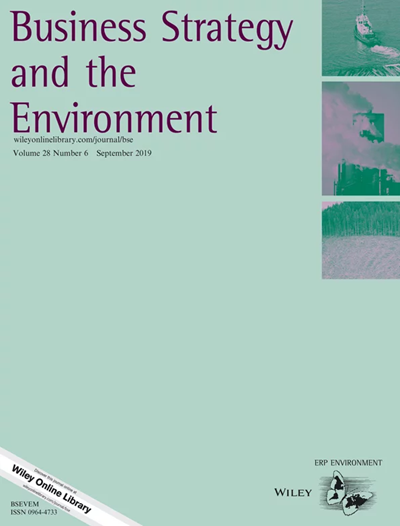The Driving Mechanisms Behind Green Entrepreneurial Orientation
IF 12.5
1区 管理学
Q1 BUSINESS
引用次数: 0
Abstract
As environmental challenges intensify, an increasing number of businesses are adopting green entrepreneurial strategies to drive environmental innovation and balance corporate practices with sustainability goals. This study investigates the key drivers of green entrepreneurial orientation by applying the ability, motivation, and opportunity (AMO) model. The analysis considers five antecedent factors (coercive pressure, normative pressure, mimetic pressure, environmental commitment, and innovative capability), which represent the dimensions of opportunity, motivation, and ability of the AMO model. Univariate analysis reveals that all factors with the exception of mimetic pressure positively influence green entrepreneurial orientation. Furthermore, fuzzy‐set qualitative comparative analysis (fsQCA) identifies five configurations of these factors that lead to the adoption of green entrepreneurial orientation. These results show that the combined impact of factors exceeds the influence of individual factors. This research enhances the understanding of how external pressures and internal capabilities jointly drive green entrepreneurial orientation. By utilizing the fsQCA method, the study uncovers the synergistic effects of various factors, providing a more holistic view of how businesses can successfully implement green entrepreneurship. These insights offer actionable guidance for firms and policymakers seeking to foster sustainable business practices in a dynamic and environmentally conscious marketplace.绿色创业导向的驱动机制
随着环境挑战的加剧,越来越多的企业正在采用绿色创业战略来推动环境创新,并平衡企业实践与可持续发展目标。本研究运用能力、动机与机会(AMO)模型探讨绿色创业导向的关键驱动因素。分析考虑了五个先行因素(强制压力、规范压力、模仿压力、环境承诺和创新能力),它们代表了AMO模型的机会、动机和能力维度。单因素分析表明,除模仿压力外,其他因素均对绿色创业倾向有正向影响。此外,模糊集定性比较分析(fsQCA)确定了导致采用绿色创业导向的这些因素的五种配置。这些结果表明,各因素的综合影响超过了单个因素的影响。本研究增进了对外部压力与内部能力共同驱动绿色创业取向的理解。利用fsQCA方法,本研究揭示了各种因素的协同效应,为企业如何成功实施绿色创业提供了更全面的视角。这些见解为企业和政策制定者在一个充满活力和环保意识的市场中寻求促进可持续商业实践提供了可行的指导。
本文章由计算机程序翻译,如有差异,请以英文原文为准。
求助全文
约1分钟内获得全文
求助全文
来源期刊

Business Strategy and The Environment
Multiple-
CiteScore
22.50
自引率
19.40%
发文量
336
期刊介绍:
Business Strategy and the Environment (BSE) is a leading academic journal focused on business strategies for improving the natural environment. It publishes peer-reviewed research on various topics such as systems and standards, environmental performance, disclosure, eco-innovation, corporate environmental management tools, organizations and management, supply chains, circular economy, governance, green finance, industry sectors, and responses to climate change and other contemporary environmental issues. The journal aims to provide original contributions that enhance the understanding of sustainability in business. Its target audience includes academics, practitioners, business managers, and consultants. However, BSE does not accept papers on corporate social responsibility (CSR), as this topic is covered by its sibling journal Corporate Social Responsibility and Environmental Management. The journal is indexed in several databases and collections such as ABI/INFORM Collection, Agricultural & Environmental Science Database, BIOBASE, Emerald Management Reviews, GeoArchive, Environment Index, GEOBASE, INSPEC, Technology Collection, and Web of Science.
 求助内容:
求助内容: 应助结果提醒方式:
应助结果提醒方式:


